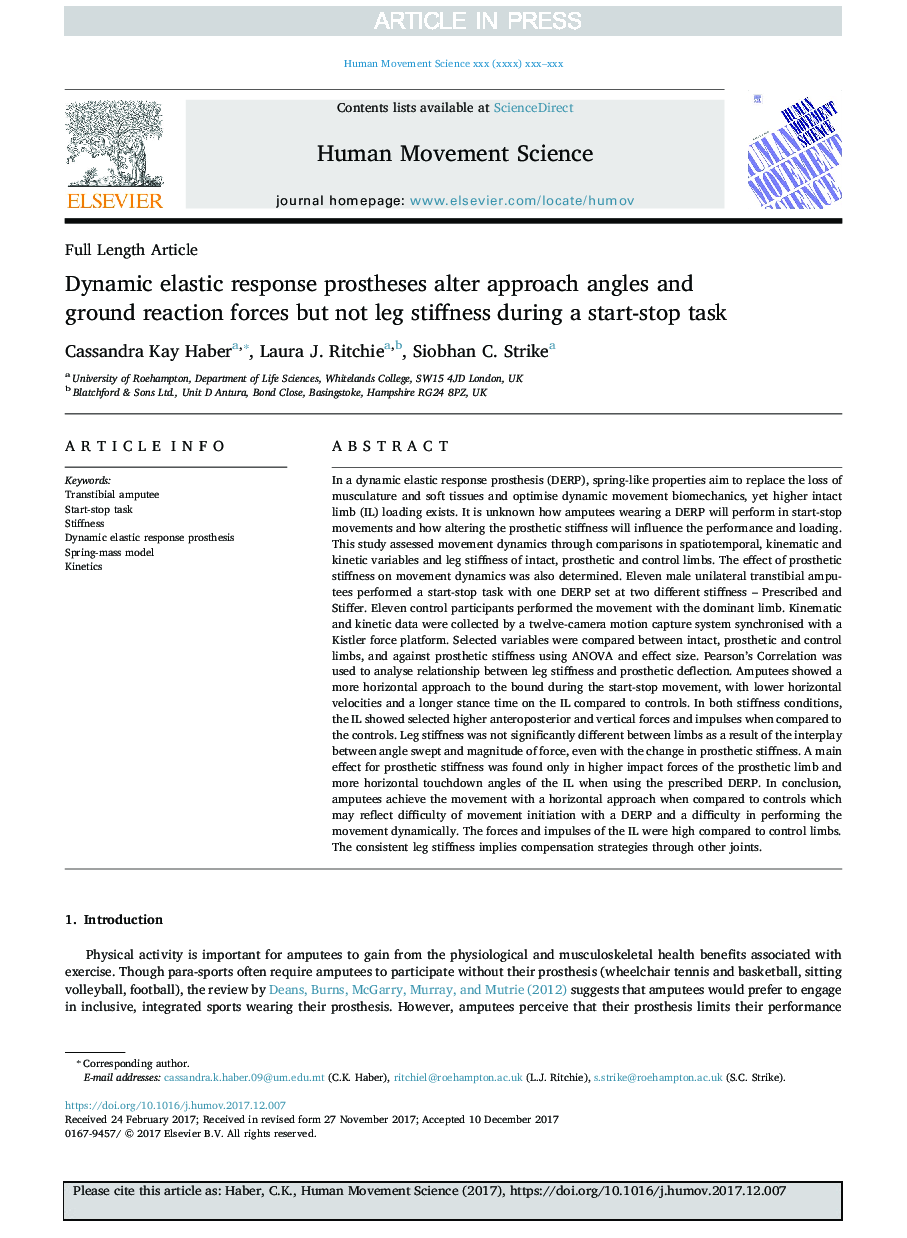| کد مقاله | کد نشریه | سال انتشار | مقاله انگلیسی | نسخه تمام متن |
|---|---|---|---|---|
| 7291014 | 1474206 | 2018 | 10 صفحه PDF | دانلود رایگان |
عنوان انگلیسی مقاله ISI
Dynamic elastic response prostheses alter approach angles and ground reaction forces but not leg stiffness during a start-stop task
ترجمه فارسی عنوان
پروتزهای واکنش پویا بر مبنای زاویه دید و نیروهای واکنش زمین تغییر می کند، اما سفتی پا را در طول یک کار توقف شروع نمی کند
دانلود مقاله + سفارش ترجمه
دانلود مقاله ISI انگلیسی
رایگان برای ایرانیان
کلمات کلیدی
موضوعات مرتبط
علوم زیستی و بیوفناوری
علم عصب شناسی
علوم اعصاب شناختی
چکیده انگلیسی
In a dynamic elastic response prosthesis (DERP), spring-like properties aim to replace the loss of musculature and soft tissues and optimise dynamic movement biomechanics, yet higher intact limb (IL) loading exists. It is unknown how amputees wearing a DERP will perform in start-stop movements and how altering the prosthetic stiffness will influence the performance and loading. This study assessed movement dynamics through comparisons in spatiotemporal, kinematic and kinetic variables and leg stiffness of intact, prosthetic and control limbs. The effect of prosthetic stiffness on movement dynamics was also determined. Eleven male unilateral transtibial amputees performed a start-stop task with one DERP set at two different stiffness - Prescribed and Stiffer. Eleven control participants performed the movement with the dominant limb. Kinematic and kinetic data were collected by a twelve-camera motion capture system synchronised with a Kistler force platform. Selected variables were compared between intact, prosthetic and control limbs, and against prosthetic stiffness using ANOVA and effect size. Pearson's Correlation was used to analyse relationship between leg stiffness and prosthetic deflection. Amputees showed a more horizontal approach to the bound during the start-stop movement, with lower horizontal velocities and a longer stance time on the IL compared to controls. In both stiffness conditions, the IL showed selected higher anteroposterior and vertical forces and impulses when compared to the controls. Leg stiffness was not significantly different between limbs as a result of the interplay between angle swept and magnitude of force, even with the change in prosthetic stiffness. A main effect for prosthetic stiffness was found only in higher impact forces of the prosthetic limb and more horizontal touchdown angles of the IL when using the prescribed DERP. In conclusion, amputees achieve the movement with a horizontal approach when compared to controls which may reflect difficulty of movement initiation with a DERP and a difficulty in performing the movement dynamically. The forces and impulses of the IL were high compared to control limbs. The consistent leg stiffness implies compensation strategies through other joints.
ناشر
Database: Elsevier - ScienceDirect (ساینس دایرکت)
Journal: Human Movement Science - Volume 58, April 2018, Pages 337-346
Journal: Human Movement Science - Volume 58, April 2018, Pages 337-346
نویسندگان
Cassandra Kay Haber, Laura J. Ritchie, Siobhan C. Strike,
